The Annapurna Circuit Trek in August offers a sense of freshness to the classic Himalayan trek. The rains transform the entire trail into a living, breathing terrain. Hillsides are clothed in green, rivers overflow, and waterfalls crash over cliffs. It is the time when nature is raw, vital, and deeply fulfilling. Fewer individuals on the path make the experience more peaceful, intimate, and sensitive to rural life.
The daytime temperature ranges from 18°C to 24°C in low altitudes below 2,500 meters in August, the peak monsoon of Nepal. In hotter places, 30°C becomes the temperature. The more you travel upwards, the cooler the air becomes. Daytime temperature from 9 to 20°C is there from 2,500 meters to 4,000 meters. In case of higher altitudes above 4,000 meters, nights drop to -4°C. Thorong La Pass is the highest point that requires more clothes. It is necessary to carry rain gear and warm clothing for comfort and protection.
It usually rains in the afternoon or evening, but mornings are normally clear. An early start allows you to see more and avoid the wettest time of day. While lower trails will get muddy and slippery, regions like Manang and Mustang are under the rain shadow. Dry spots like these give more predictable trekking weather even during monsoon. They also highlight the range of the path from green jungles to arid alpine valleys.
One of the best things about trekking in August is the serene atmosphere. There are fewer tourists, meaning the trails are open and more peaceful. Here, the teahouses are less crowded, giving you the best time to relax and interact with the locals. Villagers are often seen tilling fields, waiting for harvest. Janai Purnima or Gai Jatra festivals bring vibrancy and tradition into the experience. Off-season prices also make the trip economical.
However, there are challenges to the season. Leeches line forest trails. Slides and occasional landslides can destroy trips or transport. A few teahouses are closed due to fewer trekkers on the trail. Gear that gets soaked in water takes days to dry out. But with rugged footwear, rain-gear clothing, and flexible scheduling, you can conquer these challenges. Early mornings, cautious walking, and regular monitoring of the forecast can keep you safe and on track.
In this blog, we will see that the Annapurna Circuit is perfect for those who love nature and trekking without boundaries. It offers solitude, richness of culture, and scenery of dramatic experience that unfolds around every bend. While the weather is an extra challenge, it adds dynamism and liveliness to the trek. For the deserving and seasoned travelers, August offers a Himalayan trek like no other.
Understanding the Annapurna Circuit Trek
The Annapurna Circuit Trek in August brings both challenges and rewards. At lower elevations below 2500 meters, daytime temperatures usually range from 18 to 24°C. Some areas may even reach 30°C in the warmest parts. As you gain altitude, the weather turns cooler. Between 2500 and 4000 meters, daytime temperatures fall between 9 and 20°C. Nights get colder, especially above 4000 meters. Warm layers and proper gear are important at Thorong La Pass, where temperatures can drop to -4°C at night.
August is the peak monsoon season here in Nepal. Rain often arrives in the afternoon or evening. Lower sections of the trail receive more rainfall, where trails in these areas can become very muddy, slippery, and harder to walk on. Trail blockages may also occur due to a Landslide. However, places like Manang and Mustang are key destinations along the Annapurna Circuit trek in Nepal that lie in a rain shadow. These regions stay drier, offering better trekking conditions.
Even with the rain, the landscape looks fresh and full of life. The hills turn deep green, rivers run stronger, and waterfalls pour with force. Mornings usually start with clear blue skies and good mountain views. However, clouds often gather as the day goes on. Very few trekkers hike the Annapurna Circuit in August. But if you stay flexible and come prepared, you’ll enjoy a quieter and more peaceful journey.
What to Expect in August Weather at the Annapurna Circuit Trek?
Trekking at the Annapurna Circuit in August means stepping right into Nepal’s monsoon season. You’ll more likely face regular rainfall, especially in the lower and middle sections of the trail. Rain usually falls in the afternoons and evenings, where it can be heavy at times. However, not every day brings downpours as some trekkers report just a few rainy days during the trip.
The monsoon weather makes trails muddy and quite slippery, increasing the risk of landslides. This may cause delays or detours in the adventure. Despite this, mornings often offer clearer skies with refreshing mountain views before the clouds roll in later in the day. The landscape turns lush and green, and rivers and waterfalls flow with more force, creating dramatic scenery. Temperatures vary with elevation at lower areas stay warm and humid, while higher places are cooler. Even after reaching freezing at Thorong La Pass.
With fewer trekkers around the trails in August are quieter, so your journey feels more peaceful. But expect more insects and leeches due to the damp conditions. With sturdy boots, waterproof gear, and flexible planning, you can still enjoy this trek. August will reward you, if stay alert and prepare well. You with get to enjoy vibrant nature, fresh air and a slower alongside more serene mountain experience.
Pros of Trekking the Annapurna Circuit in August
- Peaceful atmosphere due to fewer people on the trail.
- Lush fields due to monsoon rain.
- Lower accommodations charges and off-season rates.
- Mild climate at lower altitudes.
- Chances to witness farming and planting of rice in villages exclusively.
- Unfettered mornings, especially in rain-shadow areas such as Manang.
- Wildflowers and leaves enhance the natural beauty.
- Waterfalls are at their peak and scenic.
- Easier to get permits and book teahouses ahead.
- Be able to live like locals and experience the nation away from tourists.
Cons of Trekking the Annapurna Circuit in August
- Slippery and muddy trails because of heavy monsoon rain
- The prolonged landslide can block roads and trails
- Leeches are common on lower, forested trails
- Mountains are largely obscured by clouds
- Transport delay due to roads
- Flight delays in Jomsom and Pokhara due to the risk
- Fewer trekkers, thus some teahouses may be closed
- Humidity is making trekking cumbersome in the lower valleys
- Long drying time in wet equipment and clothes
- Rising water could make river crossing risky
Accommodation and Food in August
There are still plenty of accommodations available along the Annapurna Circuit in August, even though it’s monsoon season. The majority of the teahouses are still open, and since there are fewer tourists on the route, you can easily get a room without booking ahead. The lower villages’ teahouses usually have warm accommodations with beds, pillows, and blankets.
Hot showers are frequently available but may have an extra cost. The higher you go, the simpler the facilities are. Shared bathrooms, little heat, and sharing a room near high passes like Thorong La are common. Nights can be cold, especially above 3,000 meters, so it is a good idea to bring a warm sleeping bag.
As for food, every stop has filling meals. Most trekkers opt for dal bhat as it is a plate of rice and lentil soup. Mostly seasonal and regional vegetables are enjoyed as available, sometimes eggs or meat. Simple international fare such as fried rice, pasta, pancakes, and sandwiches is also available at teahouses. The more you ascend, the fewer numbers of varieties one gets. You can even obtain tea, coffee, and other refreshments like chocolates and fruits in most villages. Yet the food you get is quite nutritious and freshly made. With quieter areas in restaurants, you relax and enjoy the quieter pace.
Packing List for a Monsoon Trek
- Waterproof backpack cover
- Quick-drying trekking shirts and pants
- Waterproof trekking boots with a good grip
- Lightweight rain jacket or poncho
- A rainproof backpack or dry bags for gear
- Trekking poles for slippery ground
- Moisture-wicking socks (multiple pairs)
- Gaiters to exclude leeches and mud
- Hat with a wide brim or rain cap
- UV-protection sunglasses
- Lightweight fleece or thermal layer (for higher elevations)
- Waterproof gloves
- Headlamp with extra batteries
- Travel towel and fast-dry undergarments
- Personal water filter or purification tablets
- Reusable water bottles or a hydration pack
- High-energy foods (chocolate, bars, nuts)
- Sun block and insect repellent (leech repellent)
- Minimum first aid kit and blister prevention
- Antifungal foot powder
- Waterproof bag for electronics and documents
- Extra zip-lock or plastic bags for storing wet clothing
- Light sandals or camp shoes (for nighttime)
- Permit documents and photocopies for trekking
Do You Need a Guide in August?
Trekking the Annapurna Circuit in August is less crowded, but the monsoon presents some difficulties. Trails become muddy and slippery, as there is also a greater danger of landslides or flooding closing off some paths. Although seasoned trekkers might find it safe to trek on their own, it is a sound idea to employ a licensed guide. If you have limited experience with high-altitude trekking or are not well acquainted with the terrain.
A guide not just shows the direction, but they’re up to date on the trail as well as the weather conditions can help make a safe decision right on time. In case the route must be changed due to bad weather or trails that are impassable, your guide can re-route the itinerary in a snap. They also offer information about local culture and traditions, adding to the experience. In the event of an emergency, a guide will be able to get assistance quickly and handle communications, which tends to be challenging in remote wilderness during the wet season.
As August is not the peak season, the trails are not as congested, and certain teahouses are closed. A guide saves you time searching for accommodations and meals. Although single trekking is doable, having a guide during August provides safety, convenience, and familiarity to your experience, making your adventure more relaxed and worthwhile.
Safety Tips for the Annapurna Circuit Trek Experience in August
- Start by departing early morning to escape the rain in the afternoon.
- Use waterproof and grippy shoes to avoid slipping.
- Bring a good raincoat to dry clothes as soon as possible.
- Bring trekking poles to help with balance on uneven terrain.
- Check daily weather forecasts before your hiking session.
- Steer clear of trails where this is possible after rainfall, and landslide risk increases.
- Waddle slowly along smooth rocks and wood bridges.
- Leave your pack light to avoid injuring yourself and gaining agility.
- Stay on paths by not taking the hidden hazard.
- Inform a fellow of your route and time for return.
- Use a headlamp in fog or heavy clouding.
- Drink potable and filtered water to avoid waterborne illnesses.
- Use spare socks and spack hopping needs packed in water-sealed bags.
- Be careful to recognize the signs of altitude sickness and descend in that case.
- Camp at well-guarded and familiar lodges with good protection.
- Carry a bare minimum first aid kit with waterproof covers.
- Avoid crossing swollen rivers or suspect bridges.
- Be cautious when passing a herd or mule on a narrow trail.
- Go by local guidance and the suggestion of the guide.
- Ensure that your insurance cover is for high-altitude evacuation.
What Makes the Annapurna Circuit Trek Experience in August Special?
Trekking on the Annapurna Circuit Trail in August is an experience to remember for a lifetime. The track is quite serene and vibrant, even though it is monsoon season differently. You’ll find fewer trekkers who allow you to walk quietly on the deserted trails. Get a personal space without asking so that you can engage in relaxed conversations with native people. You’ll find tea houses less congested, earning you more conducive room arrangements and a quieter visit.
When you walk through the lower regions, you can appreciate how lush and fresh everything is. The rain rejuvenates the forests, rice fields, and valleys. Waterfalls are more powerful, and rivers look fuller, making every step prettier. Such refreshing scenery does not frequently occur in other seasons.
When you arrive at higher elevations like Manang and Mustang, the experience is once more different. These areas are in the rain shadow, and as such, the skies are still clear, and the trails are dry. This variation makes the August trek all the more intriguing.
Along the route, you should have a chance to catch on to local festivals like Janai Purnima or Gai Jatra. They will give a view into life in the village and old customs. While rain does bring some challenges, it brings some exhilaration as well. With the right gear and foresight, the Annapurna Circuit in August is an experience worth its time and challenges.
Transportation and Road Conditions in August
Arriving in the Annapurna Circuit in August necessitates patience and some adaptability. In the middle of the monsoon period, rain falls on the roads is common. Bus or jeep rides from Pokhara or Kathmandu to a trek starting point such as Besisahar or Chame may be delayed. Roads occasionally get muddy and experience landslides. Tracking local road conditions and inserting rest days into itineraries are smart choices to make.
When you begin the trek, be ready for wet and slippery trails in the lower regions. The highway between Besisahar and Manang gets wet, and the path becomes tougher to tread. Rising water can wash away or damage bridges. River crossings can become hazardous, too. In some places, you might have to use an alternate route. Asking local guides or inquiring at nearby lodges can save you.
Conditions improve as you go higher up from Manang. These areas are in the rain shadow of the Himalayas, and even in the month of August they are dry. Trails are more solid, and the views are beautiful. Although the trek is more challenging in August, the peaceful trails and greenery are well worth it. With good gear and a mindset, it is an experience that is remembered forever.
Note: If you book a package from our website, Adventure Great Himalaya. You can easily enjoy the trek without any hassle. We will take care of your trip from permits to guides, food to accommodation and everything necessary on the trails.

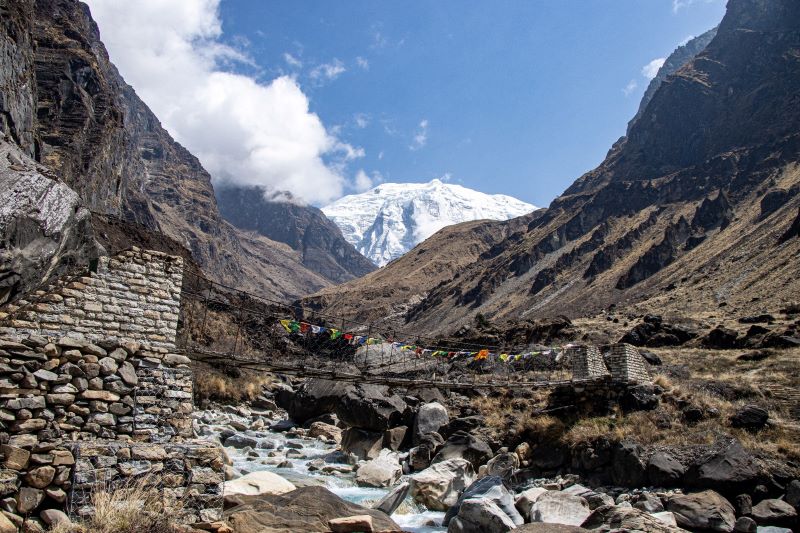
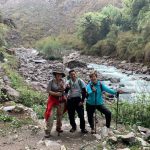 Wednesday, June 25th, 2025
Wednesday, June 25th, 2025
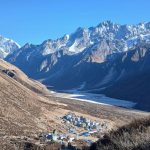 Sunday, June 22nd, 2025
Sunday, June 22nd, 2025
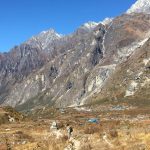 Saturday, June 14th, 2025
Saturday, June 14th, 2025
 Sunday, June 8th, 2025
Sunday, June 8th, 2025
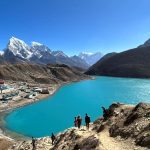 Wednesday, June 4th, 2025
Wednesday, June 4th, 2025
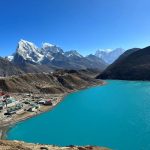 Wednesday, June 4th, 2025
Wednesday, June 4th, 2025
 Friday, May 16th, 2025
Friday, May 16th, 2025
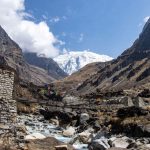 Friday, May 9th, 2025
Friday, May 9th, 2025
 Tuesday, February 25th, 2025
Tuesday, February 25th, 2025
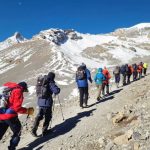 Thursday, April 24th, 2025
Thursday, April 24th, 2025
